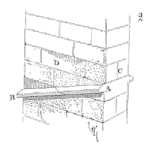
Fundamentals of Physics of Failure
Speaker: Fred Schenkelberg
A good physics of failure (PoF) model helps you understand the impact of stresses on the time to failure distribution for a specific failure mechanism. Let’s discuss PoF models, including how to create and use them effectively.
The development of PoF models got off to slow start in the 1960s. Recently, scientists and engineers have developed numerous PoF models for many of the common failure mechanisms we face in our products.
Let’s define a PoF model and how you can create a model for use with a specific failure mechanism. Plus, let’s explore how to find and adapt models found in the literature.
While not every failure mechanism will have a suitable model, those that do provide a quicker analysis of failure risks for your product. Your team can consider design changes, changes in material, assembly changes, or changes to environmental protection and quickly assess the impact (good or bad) on the expected time to failure distribution.
A mixture of models allows you to model the many competing threats to your product’s successful operation over time. Combining these models with differences in use or environmental stresses across your customer base permits modeling the effective field reliability performance.
Let’s consider PoF models, how to use them, plus how to create them, as a central element of your reliability program. We’ll discuss a range of models and where you can find more to help describe your salient failure mechanisms.
This Accendo Reliability webinar originally broadcast on 8 January 2019.
The audio track is now an Accendo Reliability Webinar Series podcast episode. View the episode show notes to listen or subscribe to podcast
Please login with your site registration to view the video recording.
If you haven’t registered, it’s free and takes only a moment.
Leave a Reply